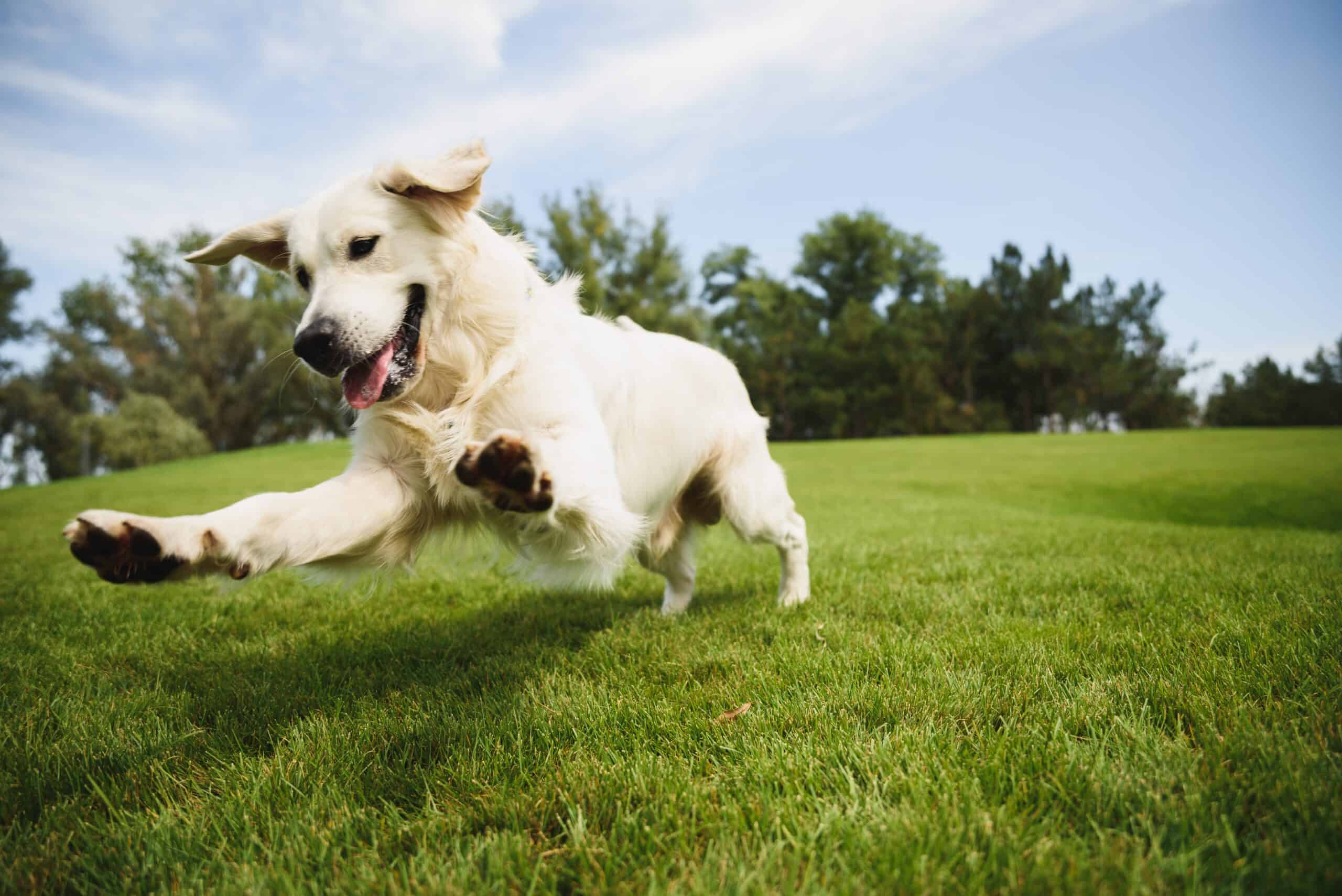Would you describe your dog as ‘confident’?
Confidence is one of those traits that is difficult to simply instill in a dog through a single training session. It is something that needs to be constantly worked on, and confidence is also something that can fluctuate throughout a dog’s lifetime based on their learned history and situations they encounter.
There are numerous benefits to building confidence in our dogs. A confident dog is less susceptible to developing behavioral issues or becoming fearful around other dogs or people. They tend to listen to handler instructions better than a fearful or anxious dog. A dog’s self-confidence also confers confidence to an owner, who feels more comfortable taking the dog out in public with a reduced risk of reactive behavior.
Assessing your dog’s confidence level – and the impact it may be having on your dog’s quality of life – can be tricky. Some dogs are simply a little more reserved (due to their breed heritage, genetics, or their life experience), and that’s totally fine. Where low confidence can become an issue is when it starts to result in less desirable behavioral outcomes, such as fear or anxiety in social situations. Consider reaching out to a professional dog trainer if you have questions about your dog’s confidence – our team at Greenside Canine will be happy to help.
What are some traits of a confident dog?
If a dog’s self-confidence is important, then we should know what to look for in their behavior. Traits of a confident dog typically include:
- Calm, relaxed body language cues
- Comfortable around other dogs and people
- Listens to owner’s instructions
- Does not engage in avoidance behaviors (ex: cowering, backing away)
- Willing to try new activities without undue fear or hesitation
Naturally, every dog is different and may display these traits to varying degrees.
Finding the root causes of low confidence
When trying to improve your dog’s confidence, it is important to ascertain why their confidence may have been affected in the first place. As we stated above, this can be a complex process that often involves reviewing the dog’s behavioral history, health history, and even tracing back to their breeding and start in life as a new puppy. Establishing the root cause of your dog’s low confidence can help you to put a plan in place to improve it.
Here are some common reasons why a dog may be lacking in confidence.
- Poor breeding. How dogs enter the world can have a huge bearing on the way they experience the world throughout their lives. Puppies born to fearful, anxious mothers in stressful conditions are more likely to exhibit those same traits as they grow up.
- Genetics and breed characteristics. Many dog breeds were developed for specific purposes. A lifestyle that is not aligned with their breed characteristics can result in a lack of confidence. For example, working breeds like German Shepherds and Border Collies need copious amounts of physical exercise to expend energy, as these dogs have been active for generations. Not providing these outlets can induce anxiety and damage a dog’s confidence.
- Lack of socialization. Exposing your puppy to a variety of new environments helps to generalize their behavior. This is critical in the development stage for puppies, but it shouldn’t be overlooked as your dog grows older, either. If your dog isn’t introduced to new people, new animals or new places, it follows suit that they will not have act confidently when confronted with these scenarios in the future.
- Bad experiences. Low confidence can be linked to a traumatic lived experience for your dog. This is why it is crucial to understand the key events in your dog’s life, as they can have an outsized impact on their behavior. A dog who was attacked by another dog will become apprehensive about meeting other dogs in the future; similarly, dogs who have had negative experiences with men may be hesitant to engage with them.
- Health concerns. Pain can cause stress in dogs, and this can also have consequences for their behavior. Dogs who have sustained an injury may be less willing to engage in activities or interact with others as a form of self-protection.

How to improve your dog’s self-confidence
Armed with the knowledge of why your dog’s confidence may be low, you can then take remedial steps to improve it. Below, we have listed some ways to implement confidence-building techniques.
It should be noted that these are general best practices for building up your dog’s confidence. In some situations where a significantly traumatic experience took place in the dog’s past, the focus should be on attempting to carefully and systematically desensitize the dog to the negative stimulus. This may be more about ongoing management than completely eradicating the negative connotations to the stimulus.
Build trust in the human-canine relationship
In addition to increased confidence, lots of positive things will flow from creating a solid, trusted relationship with your dog. Spend time with your dog to build that foundational trust by taking part in activities with them, taking care of their needs, and rewarding them with praise and positive encouragement when they display good behavior. As their guardian, you are the primary engineer of creating a safe and secure environment where they can flourish.
Counter-conditioning
Using counter-conditioning can help to adjust your dog’s approach to potentially scary or anxiety-inducing situations. Counter-conditioning is providing a dog with small levels of exposure to a negative stimulus, and rewarding them so that the experience becomes a positive one. For example, if a dog is fearful of the vacuum cleaner, you could switch the vacuum on in a different room to your dog; then, give them a small treat. Slowly bring the vacuum cleaner closer to them, rewarding at regular intervals. Progress may be incremental and slow at first, but with repeated practice, you can build your dog’s relationship with the negative stimulus.
Teach them new skills
Dog training is a great way to boost your dog’s confidence. It provides them with much-needed physical and mental stimulation, encouraging them to think about the task they are engaged in. It also allows you an opportunity to provide plenty of praise and positivity, which helps to build the bond between the two of you.
Socialization
As mentioned earlier in this article, socialization is absolutely pivotal to building a well-rounded, confident dog. Frequent trips out in public to allow your dog to experience new environments (with new smells!) is a great way to build their confidence when they encounter novel settings. Arranging playdates with familiar, friendly dogs is a good idea to reinforce the positive aspects of meeting fellow dogs.
Activities, games and puzzles
Succeeding at an activity breeds confidence. That is true for humans, and it is true for dogs, too. Providing your dog with a puzzle game, playing ‘find the treat’ in your home, or even enrolling them in a new dog sport like agility or scent work, are all great ways to improve your dog’s confidence. These also provide enrichment and mental stimulation, which are key to preventing destructive behaviors from developing.
In conclusion
We all want a confident dog – and our paths to building our own dog’s confidence will be unique, based on a number of factors including genetics, breed characteristics, health concerns and behavioral history. Implementing many of the suggestions in this article can set you on the right path to boosting your dog’s confidence.
If you have questions on your dog’s confidence, or if you would like to speak to a professional dog trainer about putting a plan in place for improvement, reach out to our team at Greenside Canine! We offer a variety of dog training programs that can facilitate improvement in your dog’s confidence and help address the root causes of any confidence issues.

